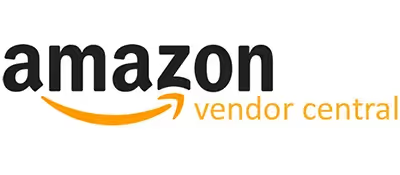The Manufacturer’s Dilemma: Is Vendor Central (1P) or Seller Central (3P) Better on Amazon?
Manufacturers often can't decide. Should they sell 1P or 3P on Amazon through Amazon's Vendor Central or Seller Central?

So you are a brand, a manufacturer, an inventor of product and experiences. Traditionally brands and manufactures have had one primary objective and mission. That is to develop the products that solve problems, create or enhance experiences and ultimately service your prized audience. This means you know what people want, and more important, you know how to give people what they want. This is irrefutably the most artistic side of product based business development, the ability to take napkin concepts to physical products that are distributed across the world.In the traditional brick and mortar model, manufacturers focused purely on the art of product development and the logistics associated with large scale pallet distribution. This allows brands to effectively and attentively hone in on consumer demands and efficiently deliver the products we love over and over again. Until 1972 the thought of a digital marketplace servicing all consumers directly was nearly unfathomable. How could manufactures have known that 1972 would mark beginning of the most disruptive force to our “timeless” business model?

“In 1972, long before eBay or Amazon, students from Stanford University in California and MIT in Massachusetts conducted the first ever online transaction. Using the Arpanet account at their artificial intelligence lab, the Stanford students sold their counterparts a tiny amount of marijuana.”In researching and discovering what is considered the first online transaction, I chuckled, knowing the hilarity that this was the transaction that marked the impetus for the evolution of the traditional manufacturers model. The internet paved the way for direct to consumer opportunities. It has shifted the entire world of B&M retail and shaped our current commerce environment in its entirety. Some manufactures have embraced D2C models, finding the opportunity too enticing. Others have remained strong in supporting and valuing their “timeless” physical distribution networks. There is no clear answer showing the best approach for any given manufacturer, but one thing is certain. There isn’t a manufacturer or brand out there that can afford to continue neglecting or flat out ignoring the 800 pound gorilla that is Amazon.
Amazon’s Vendor Central - (1P)
The pros
Amazon’s 1P platform, Vendor Central, reinforces that “timeless” distribution model that enables manufacturers to primarily do what they do best. When dealing with Vendor Central, a brand sells its product directly to Amazon at an established wholesale price. Brands then receive scheduled purchase orders and begin shipping pallets to FBA warehouses across their given marketplaces, whether they are domestic or international. This singular relationship allows brands to adequately forecast sales and thus production.

In years past, Vendor Central has offered the smoothest transition for large brands to enter the Amazon Marketplace and use Amazon fulfillment services. Historically it has offered more robust content, marketing and advertising tools that were not available to Seller Central (3P) participants. If your company is currently in a 1P relationship with Amazon, hats off to you. It was likely the best decision for your team at the time. It likely allowed your team to remain focused on what manufactures do best rather than inundating them with what have typically been retail roles.
The cons
While the move to Vendor Central seems simple, many of us are still experiencing internal growing pains. Rather than addressing every potential strain, I will outline three core topics worth consideration when dealing with Amazon.Brand Protection:- Managing Unauthorized Resellers- Uniform Brand Representation (MAP)- Enforcing Minimum Advertising Price Policies (MAP)- Catalog PresenceBrand Growth:- Content Optimization- Advertising OptimizationDistribution:- Logistics- Forecasting
Brand protection: the problem
The first frustration most Brands face on Amazon is the inability to manage authorized resellers. Few companies are capable of controlling their distribution in a fashion that eliminates leaky product from entering third-party marketplaces. This may be a distributor who needs to liquidate overstock, it could be a warehouse employee taking product home, a box may fall off a truck. Either way, if you are an established brand with product demand, your products are online. If you didn’t take the time to establish your catalog in its entirety from Amazon’s inception, you are prone to this issue.Unauthorized resellers result in brand misrepresentation. If you don’t have control of your sellers then anybody can throw up any image or language representing your brand. Listing images and content are often subpar and lead to consumer confusion.Amazon intends for its marketplace to be price competitive. If multiple sellers are violating MAP policies in an effort to attain buy-box ownership, you will see their pre-programmed re-pricers race to the bottom. Ultimately this deteriorates B&M distributor relations. I cannot count the number of times a brand partner has come to me terrified that Best Buy, Target or Walmart is pulling their purchasing because they simply can’t compete with Amazon. If these conversations haven’t come up, consider yourself lucky, they will.Catalog presence may seem obvious but many brands on Vendor Central only list the products they currently sell through Amazon directly. Once your brand proves profitable on Amazon, any product in your catalog that doesn't have an associated listing will quickly get one from any 3P seller. It is worth the time, effort and resources to establish your brand catalog in its entirety. That may be a simple task for smaller companies but it quickly proves difficult for brands with thousands of SKUs.
Brand growth: the problem
Content is King while advertising and catalog presence are generally assumed. Your site or catalog images and content may be adequate for your traditional sales model, but Amazon conversion rates are highly sensitive to optimized listings. It is important that your team or Brand Partner pay attention to content, leveraging A+ and Enhanced Brand Content (EBC) tools readily available. Most brands are not accustomed to the platform or developing this type of specialized content. Keep in mind content is ever evolving with the competitive environment.These days advertising optimization comes down to partnering with a team that offers the most current advertising technology. The best advertising systems are run by algorithmic, rules based machines. If you are still running “Automated Campaigns” then pushing them manually and adding negative keywords, you’re doing it wrong. This manual effort of optimizing Amazon PPC has been dated for at least 2 years and typically results in failed categoric rank efforts. Most traditional brands simply don’t have the tech developed internally to optimize their advertising. Considering the range of tools outside general PPC, it requires a current and experienced specialist to adequately outline the correct strategy for your brand. This typically proves a difficult hire with high turnover. If you have your Amazon wizard and you are meeting all of your goals then treat them well. They are unicorns.
Distribution: the problem
Large brands are typically familiar with large scale pallet shipping. Shipping pallets to Amazon is typically a non-issue. However, the preparation for FBA shipments often proves challenging. While Amazon offers some services in regards to product labeling it is dependent on ASIN categories and your specific product offering. This can create logistical confusion and the consequences for a misstep in this process are high. If you fail to follow Amazons Packing & Prep Requirements your shipment will eventually make it back to you. These processing timelines are unclear and dependent on the FBA facilities current workflow. When a shipment is rejected your listing will most likely face a stock-out scenario. This will route sales to any other sellers on your ASIN but will quickly overwhelm available stock. Worst case scenario is a full ASIN stock-out. Considering sales velocity is the most heavily weighted metric in achieving and maintaining category rank. Stock-outs can take months to recover from and often require heavy advertising spend.
Migrating to Seller Central (3P) or at least to a (3P) Hybrid Model
Having outlined the advantages and liabilities that Vendor Central (1P) present I would like to shift our attention to Seller Central and 3P Hybrid models. As a Seller Central participant you directly sell your product on Amazon under your own seller account. In a (3P) hybrid model you maintain your Vendor Central relations and sales but simultaneously manage your Seller Central account. The advantages to establishing a 3P model for your brand are clear. If executed properly, you can optimally protect, grow and distribute your brand.

Having a Seller Central presence mitigates stock-out risks, allows you to begin listing your products not sold by Amazon and enables you to promote your catalog in its entirety. For some it will make sense to establish a Hybrid of Vendor and Seller Central presence. For others it will make sense to move away from Vendor Central where possible.
To partner, or not to partner...
The decision tree will eventually lead to a few specific questions that brands and manufactures should honestly consider.1. Is my team capable of executing an optimized Amazon strategy that adequately manages authorized resellers, uniformly represents my brand, enforces MAP policy, optimizes listing content, technically executes an optimized advertising strategy, presents my catalog in its entirety & logistically executes efficient distribution and forecasting?2. Even if my team is capable of some or all of this, should we allocate our resources to this as a manufacturer?3. Who is going to be my key partner to help put all of this together?Having over a decades worth of experience in this specific industry, having witnessed the evolution of this platform and how it has impacted my businesses and those of my clients, here is my two cents.We all need to understand how powerful the Amazon platform already is and will become. We need to move from an apathetic approach to engaged full solution. It is imperative that we take the time to ensure our brands are adequately represented, protected, optimized and continuously monitored on this platform. If your team does not currently have a comprehensive Amazon Strategy, go get a partner today.
Solution: Pattern as a partner
At Pattern we take a holistic approach to all of the issues I have outlined. We provide the legal tech to fully protect your brand and enforce your policies. We have a proven content team that continuously drives and monitors optimized click through ratios and conversions. We ensure uniform brand representation, instilling buyer confidence when they engage with your brand. We have the most intelligent advertising platform I have found to date. We have global fulfillment facilities that manage all QC and distribution logistics. We have dedicated brand managers who maintain constant contact with your team and act as conduit in disseminating strategic direction.

Our model is simple. We are the relationship you wish you had with Vendor Central. We offer a wide range of a la carte services but our most successful relationship is our Exclusive Seller Model. In this relationship we become your exclusive seller on Amazon, as such we purchase inventory direct from you and then deploy all of our services on behalf of your brand.
Brand protection:
- Managing Unauthorized Resellers: We deploy our proprietary monitoring software, TriGuardian, which reports unauthorized sellers to our legal partner.
- Enforcing Minimum Advertising Price Policies (MAP): We facilitate your relationship with our legal partner and assume all legal costs.
- Uniform Brand Representation: Full support from our content team in creating & optimizing your listings according to your desired brand image.
- Catalog Presence: Our team will ensure your catalog is represented in its entirety.
Brand growth:
- Content Optimization: Your content is continuously tested and improved to optimize Click Through Rations and Conversion Rates.
- Advertising Optimization: Your current advertising strategy will be reviewed by our team, improved and then deployed by our advertising engine which will ensure your ad spend is optimized.
Distribution:
- Logistics: You ship your product to our facilities and we run full quality checks, manage FBA preparation and distribute to designated FBA facilities.
- Forecasting: You will have access to our forecasting tools and brand dashboard. That being said our Brand Managers work closely with your team to ensure production forecasting is communicated and purchase orders are timely.
We have found that establishing a singular line of representation on Amazon offers the strongest path to Brand Control, Growth and Distribution. This removes the burden from your shoulders and allows you to do what you do best, continue creating the products that solve problems, create or enhance experiences and ultimately service your prized audience.Ready to talk about a partnership, let's talk.





.jpg)
%20(1).jpg)